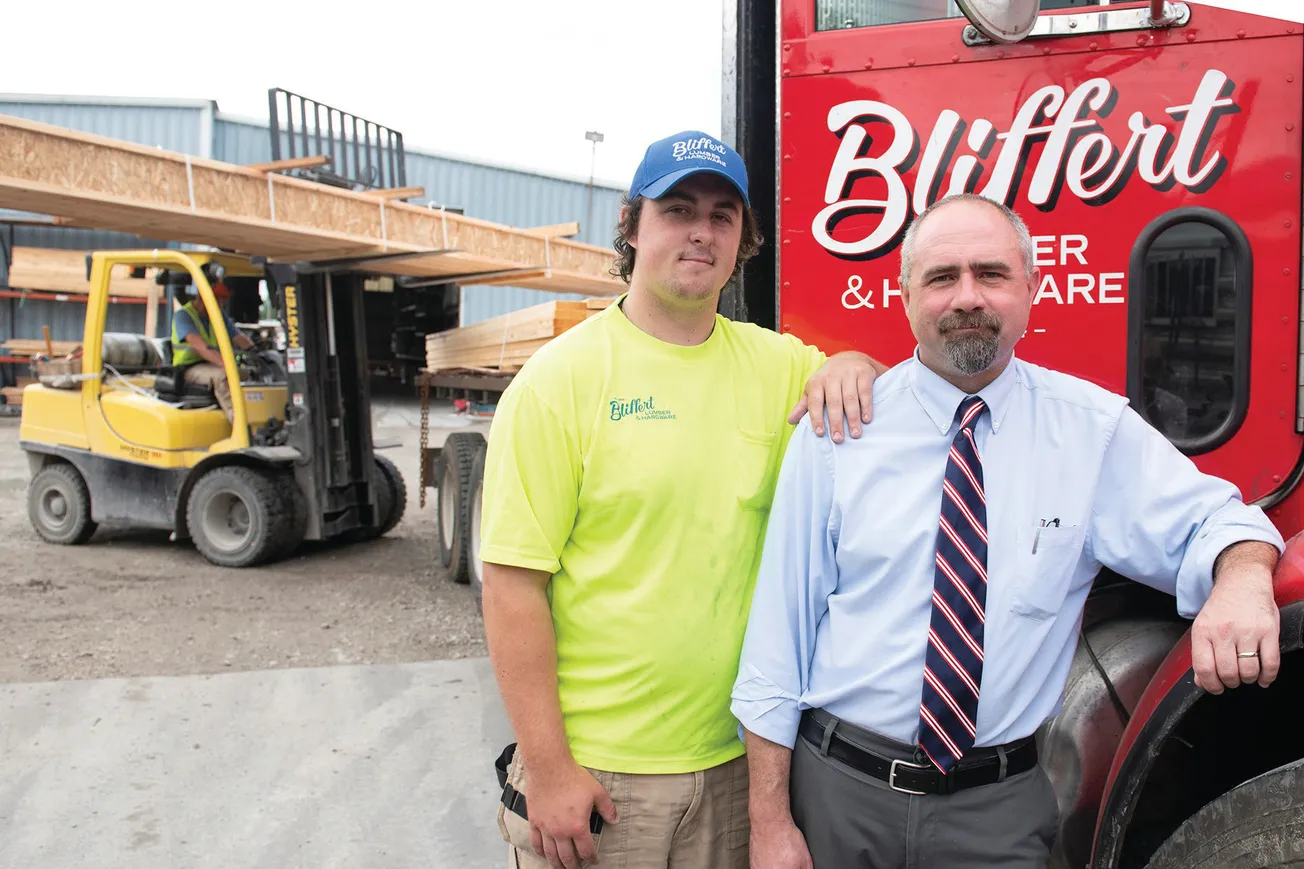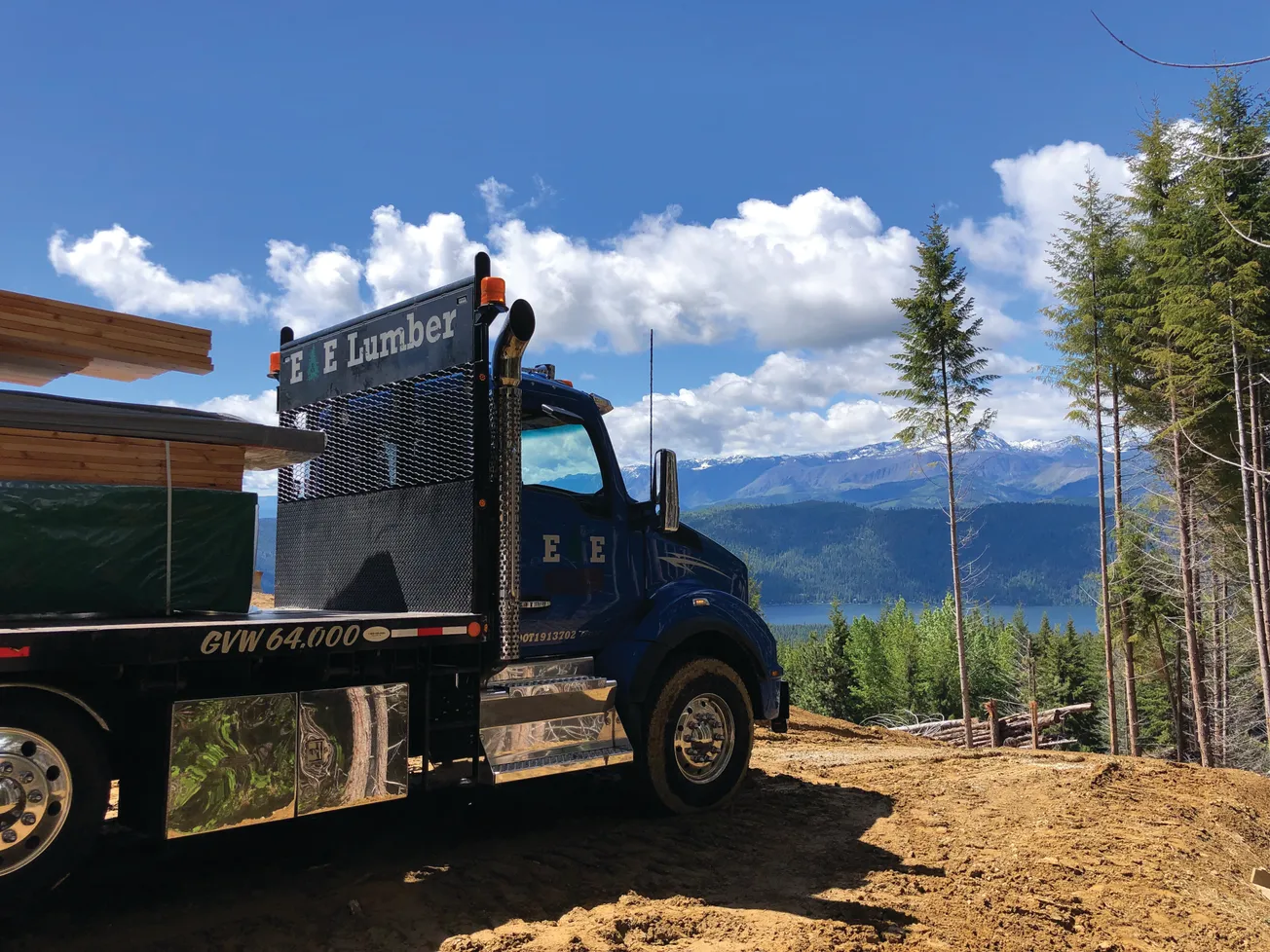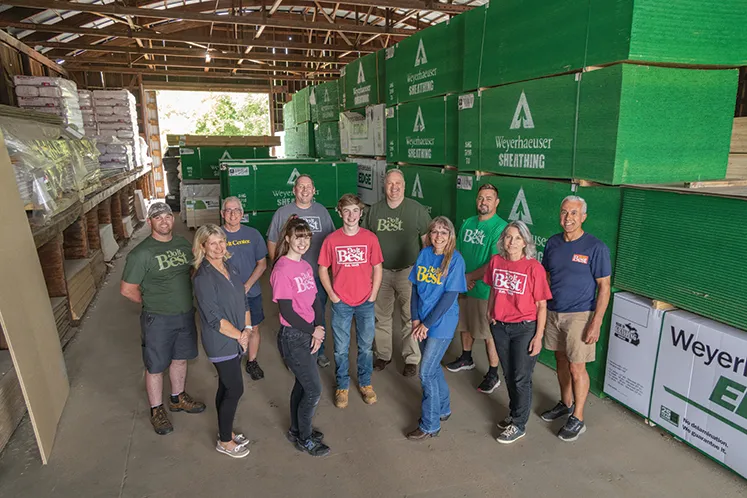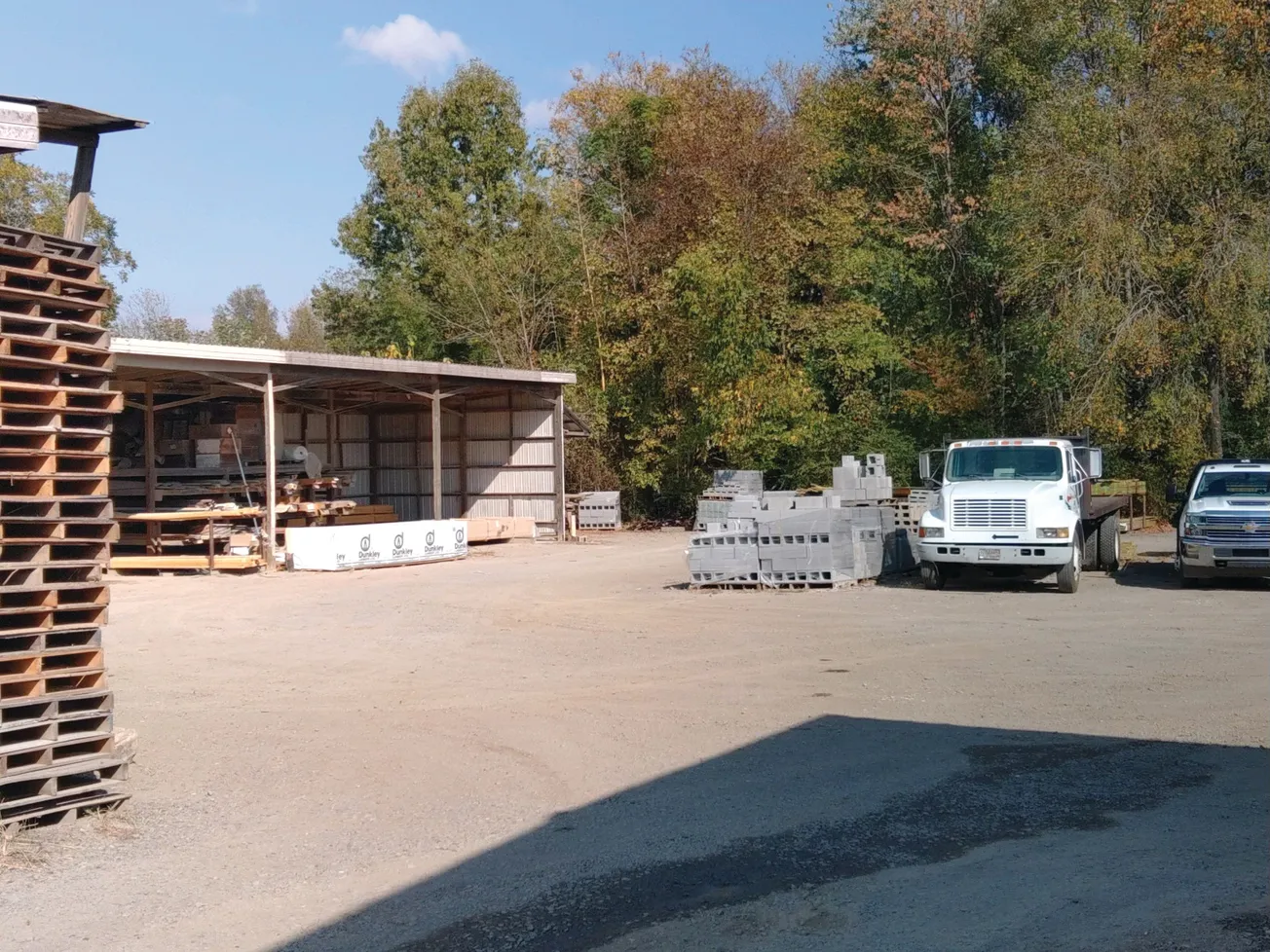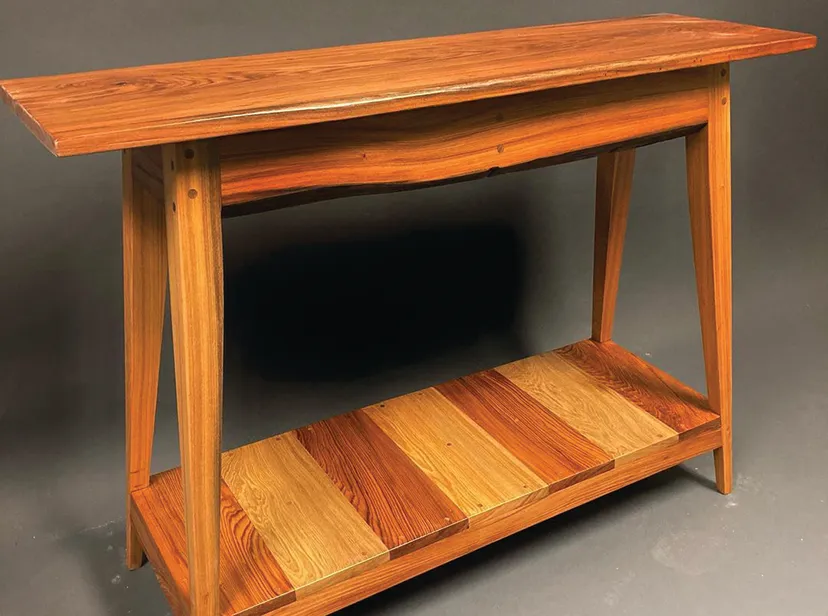Table of Contents
Back in 1904, North Side Lumber & Fuel Co. was launched to serve the building and heating needs of its Milwaukee neighbors. A young employee named J.P. Bliffert married the boss’ daughter, and, as they say, the rest is history.
Today Eli Bliffert serves as vice president (under his Uncle Fred) of what’s morphed into Bliffert Lumber & Hardware. No longer must he go door-to-door with buckets of coal, the way his grandfather did to survive the Great Depression. No longer do they carry coal, in fact. It’s long gone, replaced by everything one might need to construct a residential or commercial building. The booming outfit now boasts seven Southeast Wisconsin locations, including two serving Milwaukee and its burgeoning suburbs. (In fact, as Eli notes, his are the sole remaining yards within the city.)
The city’s core is experiencing a robust come-back, driven in part by Bliffert’s white-and-blue trucks delivering to the sites of office buildings and apartments rising here, a hospital there, and yes, a stadium, among other projects.
Eli had gone to college in Milwaukee and was on track to enter grad school until he did the math: four more costly years in a classroom, or answer Uncle Fred’s timely invitation to “take a look”? The choice was a no-brainer. “I started at the bottom. I was a (terrible) driver, then switched to Inside Sales.”
Over the years, his great-grandfather’s enterprise had been split up following his death: “My family had two yards; others went into different companies.” Eli was bent on reunification. From those two yards in 2004, the company grew as he bought back those owned by relatives as well as others from family friends looking to retire. But the acquisitions weren’t simply sentimental valentines; he’d done his research. “We were looking geographically at growth areas that were underserved.” And to this day, “we remain open to further acquisitions if it’s the right fit,” Eli declares.
Each yard has its own identity, he maintains. For instance, one location specializes in crating lumber, utilizing low-grade wood. “Nobody else in Southeast Wisconsin carries it, and there’s a lot of manufacturing here in Milwaukee.” Millwork represents another lucrative sideline, he states. “We have more profiles of moulding than any other yard in the state. We’ve kept all our old profiles, which has paid off as a good niche.”
Business generally is composed of 20% retail walk-ins and 80% commercial. “Our big yards serve multi-family or single-family residential. And for the downtown, we’re the only yard carrying fire-treated lumber.
“Our pro customers are experiencing a big single-family boom in the suburbs. We’re so close to Southern Illinois, where the schools and tax situation is worse, so families are moving here,” he explains. “Plus, we’re doing a lot of kitchens and decks now that folks are staying home due to the virus. It’s been a boom year for outdoor projects.”
Bliffert’s mantra is “Keep adapting.” Some stores do well with small appliances, others with greenhouses. Pumpkins are on offer in October, soon to be replaced with December’s Christmas trees as a customer magnet. Tool rentals also carry their own weight. “Selling tools doesn’t provide big margins,” Eli notes, “but the rental revenue is good.”
Bliffert’s crew, which has grown to 190, keeps the wheels turning. Eli looks to hire “people who like helping people…often people from the service industry. Bartenders. We’ll then teach the cabinetry” or whatever.
Hard to come by, these days? “For yard workers, yes—working outside year-round. If we find someone who’s exceptional, we’ll hire him without an opening in mind. Training is held in the Waukesha store, which can provide really good inside training. We send everyone there for a few weeks to learn everything. Then they’re ready to shadow [a veteran].
Why do they like working here? “I don’t know,” claims the boss with a laugh. Maybe it’s the example he sets: “I work more hours than anybody else, and there’s no job I won’t do. I clean the bathrooms every week.”
A strong customer-service orientation helps Bliffert fend off the competition, which, in the suburbs, is “really strong: three family yards, massive boxes. (This is Menards’ home turf.)” Bliffert combats that by stressing that “all our locations have a certain niche that they’re really good at (like supplying wood for crates). That’s backed by longtime employees with lots of knowledge. Pros like to work with us because we’re professionals, too: This is what we do. We manage the job; come in on budget; take care of problems.
Word of mouth is the primary driver of the company’s DIY trade. And being in business 116 years imparts confidence in the outfit. “We also do a fair amount of digital marketing: Google ads. Radio and print ads, too. Plus every location has its own outside salesman to call on his segment. We have really good competition, but we’re the only one who wants to do business within the city.”
Then there’s the famous pink truck. “We do a lot of charity donations, but this truck focuses us on breast cancer, which has affected family and customers. We donate for every mile traveled during the month of October. Customers even ask for it!”
Yet Bliffert has had its share of bumps in the road. “2009 was miserable! I don’t ever want to go through that again. I emptied everything I had, including my 401/k plan. I’d come aboard in 1993 and sales had kept going up every year after that until late 2002. ‘Must be a blip,’ I thought, so I didn’t start cutting staff until late 2009, and what a miserable job that was; I’d been to their weddings…
“But we built it back up. And it’s really good right now—multifamily, single family, remodeling, commercial. Next year looks good for single family, too. And, since the recession, downtown is booming again.”
On the drawing board? “Adapt to the new covid reality; concentrate on survival. Take advantage of the changing economy. Keep staff safe. (For instance, we just installed a UV lighting system in the HV system.) We’re looking to expand, too: remodeling the office in one location; adding new storage in several others; a big paving project; more forklifts and trucks. Keep helping the community grow.”
Thinking back, this reporter has to ask: Anything you’d have done differently? “Yes!” Eli is certain: “More aggressive expanding. Financing differently than I did, which was too expensive. And,” he adds, “I’d have joined my co-op buying group a lot sooner. They’ve been so helpful with new growth (with Uncle Fred stepping back, I was on my own). They gave me great ideas for expansion, remodeling, staffing and marketing.”
Eli, although he’s only 51, already—wisely—has a succession plan in place. “The guys in management are 10 years younger than me, and those who are 10 years younger than them are right behind them. Then there are my kids and their cousins….”
Before we hang up the phone, he adds with a final word of positive thinking: “The middle of the country is alive and well—economically, politically, socially. We’re used to working hard.”

